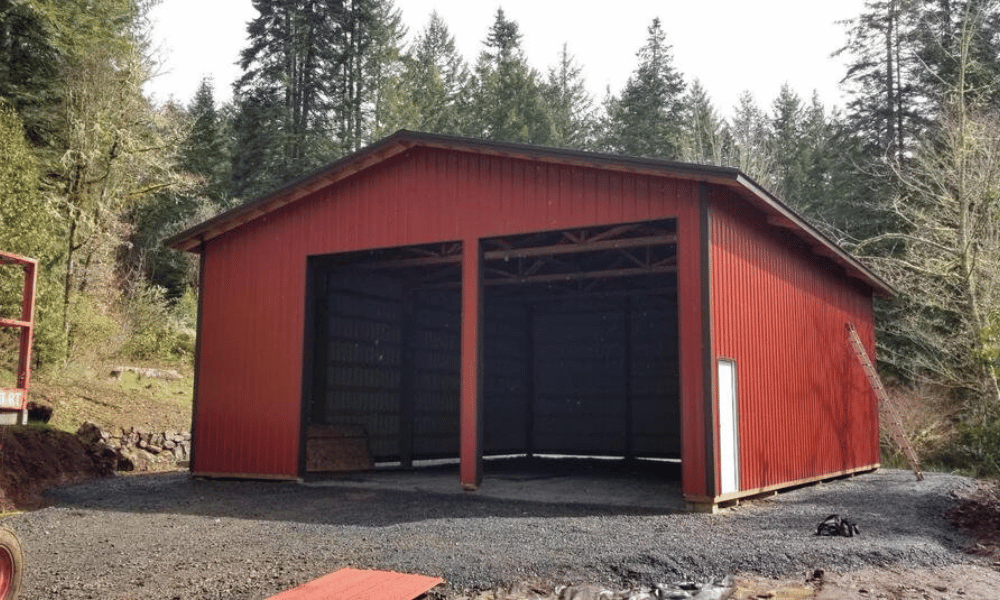Introduction
In recent years, the home construction industry has witnessed a seismic shift towards innovative building techniques that not only enhance durability but also offer cost-effective solutions for homeowners. Among these trends, one stands out like a beacon on a foggy day: pole buildings. These structures, often characterized by their unique design and swift assembly, are increasingly becoming the go-to choice for many looking to build their dream homes. In this article, we’ll explore the fascinating evolution of pole buildings, detailing their advantages, construction processes, and much more.
Local Trends in Home Construction: The Rise of the Pole Building
What Are Pole Buildings?
At its core, a pole building is an agricultural or commercial structure that utilizes poles as its primary support system. Instead of traditional foundations, these buildings are anchored with wooden or metal posts set deep into the ground. This method allows for expansive open spaces without the constraints of internal load-bearing walls.
Why Choose Pole Buildings?
Cost-Effective: One of the most alluring aspects of pole buildings is their affordability. They often require fewer materials than conventional structures.
Speedy Construction: With fewer components needed for structural integrity, builders can erect pole buildings in record time.
Versatility: Whether it’s a barn, garage, workshop, or even a residential home, pole buildings can be adapted to suit various needs.
Strong and Durable: Built to withstand harsh weather conditions, pole buildings have proven resilience against wind and snow load.
Energy Efficiency: Modern insulation materials can be easily integrated into pole buildings, enhancing energy efficiency.
The Evolution of Building Techniques
From Traditional to Modern
Historically, home construction relied heavily on brick and mortar methods that have stood the test of time. https://anotepad.com/notes/3n36ynn8 However, as new technologies emerged and consumer preferences evolved, builders began exploring alternatives that offered more flexibility and efficiency.
Case Studies in Innovative Design
Several case studies showcase how pole buildings have transformed from mere agricultural tools to chic residences:
The Farmhouse Revival: Many rural homeowners are turning traditional barns into elegant living spaces.
Urban Adaptations: In metropolitan areas where land is limited but housing demand is high, pole buildings provide creative solutions for space-efficient living.
Pole Buildings in Different Regions
How Climate Influences Design Choices
From snowy mountains to sandy beaches, different climates necessitate varied building strategies:
Northern States: Here, poles must be embedded deeply to resist frost heave.
Southern Regions: Designs may include raised floors to counteract flooding concerns.
Regional Preferences Impacting Demand
As local communities embrace eco-friendly practices and sustainable living:
- In states like Colorado and Montana where natural beauty reigns supreme, There's a rising trend toward using local timber for constructing these structures.
Construction Process of Pole Buildings
The Foundation: Setting Poles
The first step in constructing a pole building involves digging holes for the poles:
Size matters; typically 3-4 feet deep. Ensuring that they are well-spaced supports stability.Framing and Roofing Techniques
With poles set firmly in place:
- Horizontal girts (horizontal beams) are attached at various heights. Roof trusses complete the skeleton with options ranging from simple gable designs to complex hip roofs.
Choosing Materials Wisely
Selecting high-quality materials ensures longevity:
Pressure-treated wood is popular for poles due to its resistance against decay.
Metal sheeting offers durability while allowing for sleek aesthetics.
Design Flexibility of Pole Buildings
Customization Options Available
Homeowners can personalize every aspect from color schemes to interior layouts:
Open floor plans allow for fluidity between spaces. Consideration of future expansions should influence initial designs.Eco-Friendly Features
With sustainability on everyone’s mind today:
Solar panels can easily be integrated into roof designs.
Rainwater collection systems provide efficient water management solutions.
Benefits Over Traditional Construction
Cost Comparison with Conventional Homes
Pole buildings generally come with a lower price tag due to:
Reduced labor costs owing to quicker assembly times. Minimal site preparation reduces initial expenses significantly.Long-Term Savings
Thanks to energy efficiency features:
- Homeowners enjoying lower utility bills find solace in their investment over time.
Challenges Faced by Pole Buildings
Zoning Laws & Regulations
Before embarking on your building journey:
It’s crucial to consult local zoning laws which may dictate what you can construct and where.

Some areas may require specific permits for non-traditional structures like pole buildings.
Insurance Considerations
While they’re durable structures:
- Certain insurers may view them differently compared to conventional homes, Hence it's advisable to shop around before committing fully.
FAQs About Pole Buildings
1. What are pole buildings made from?
Pole buildings are primarily constructed using wooden or metal poles supported by horizontal girts and covered with either metal sheets or wood siding depending on aesthetic preferences.
2. How long does it take to build a pole building?
Typically speaking, experienced crews can erect a basic pole building within just days or weeks rather than months compared to traditional homes!
3. Are there financing options available for constructing pole buildings?
Absolutely! Many banks offer specialized loans tailored specifically for unique constructions such as pole barns or homes—so don’t hesitate to inquire about financing!
4. Can I insulate my pole building?
Yes! Insulation can be installed during construction; options range from spray foam insulation to traditional batten insulation—ensuring comfort year-round!
5. How do I maintain my pole building?
Regular maintenance includes checking for signs of rot or pest infestations along with periodic inspections followed by necessary repairs when needed!
6. Can I convert my pole barn into living space later on?
Indeed! Many homeowners start with simple barns then later renovate them into stunning residences—the possibilities are vast!
Conclusion
As we’ve explored throughout this article titled “Local Trends in Home Construction: The Rise of the Pole Building,” it’s evident that this unique construction style is rapidly gaining traction among builders and homeowners alike due largely in part because they offer versatility combined with cost-effectiveness—a marriage any homeowner would cherish! So if you're considering embarking upon your own adventure into homebuilding territory? Remember—the world of possibilities awaits you right here amid those sturdy yet elegant poles reaching skyward!